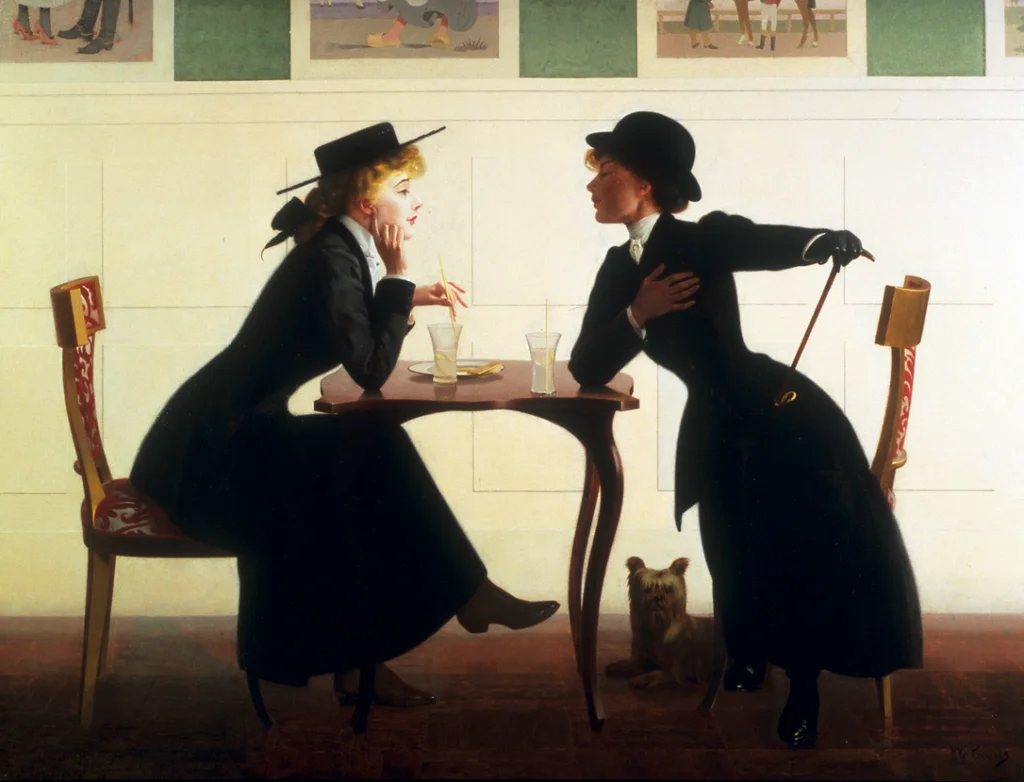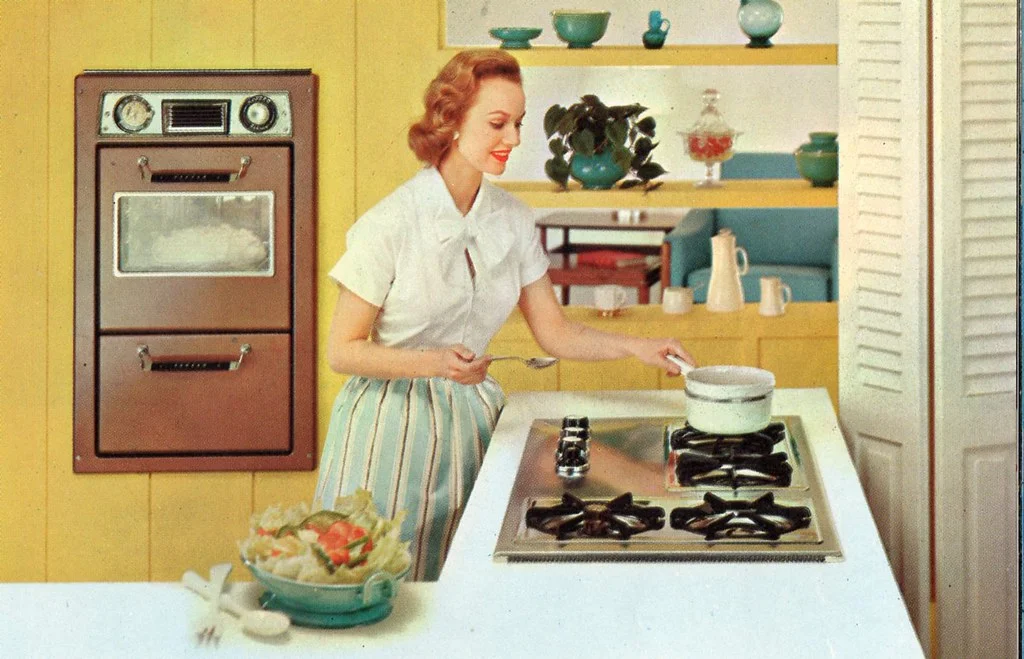The 1960s were a time of transformation, but despite the shifting culture and rapid innovations, many households embraced a simpler way of living. Without the constant distractions of modern technology, daily life focused on practicality, organization, and making the most of what you had. From streamlined home routines to timeless fashion choices, the era offered plenty of wisdom on cutting out the excess. Here are 10 minimalist habits from the ’60s that can help bring more simplicity and balance to life today.
1. Quality Over Quantity

In the 1960s, people weren’t obsessed with having more stuff. Instead, they focused on owning fewer, higher-quality items that truly lasted. Whether it was a well-made coat or sturdy furniture, the goal was to invest in things built to stand the test of time. This mindset created a sense of value and longevity, where purchases were made thoughtfully and with purpose.
Today, we can adopt the same approach by choosing long-lasting products over cheap, fast alternatives. By prioritizing quality over quantity, we not only simplify our lives but also reduce waste and promote sustainability. Embracing this timeless philosophy can bring back the satisfaction of owning things that age gracefully rather than needing constant replacement.
2. Eat Whole Foods

Long before the wellness industry took off, the ’60s embraced a back-to-basics approach to food. Families often prioritized fresh, whole foods like vegetables, fruits, grains, and natural ingredients over processed or packaged options. The era wasn’t about counting calories or following fad diets but rather enjoying real, nourishing meals made from scratch. This simple approach created a natural rhythm in the kitchen, where meals were both wholesome and satisfying.
Keeping your diet simple with nutrient-rich foods not only benefits your health but also simplifies meal prep and shopping. By focusing on fresh ingredients and avoiding overly processed products, you can enjoy meals that are both delicious and nourishing. This old-school philosophy proves that sometimes, going back to basics is the healthiest choice of all.
3. Limit Your Wardrobe

In the ’60s, people relied on a few timeless, well-made pieces rather than chasing every new trend. Wardrobes were built around staples like tailored blazers, classic dresses, and sturdy shoes that could be mixed and matched for any occasion. A capsule wardrobe wasn’t a fashion statement—it was a practical approach to ensuring clothes were versatile and long-lasting. This thoughtful method of dressing not only saved money but also made life a little easier.
Prioritizing quality over quantity made getting dressed effortless and reduced the need for constant shopping. By focusing on well-crafted pieces, people could maintain a polished look without overcrowding their closets. Embracing this mindset today can simplify your wardrobe, save time, and keep your style classic and uncluttered, proving that sometimes, less truly is more.
4. Practice Mindfulness

While mindfulness wasn’t a buzzword in the ’60s, the lifestyle of that era naturally encouraged it through everyday activities. Whether it was practicing meditation, embracing yoga, or simply taking a moment to pause and appreciate the present, people found ways to connect with themselves and their surroundings. Life moved at a slower pace, and there was an emphasis on finding balance and tranquility. This laid-back approach created a sense of calm that modern life often lacks.
Today, incorporating this mindful mindset can help reduce stress and bring clarity to a cluttered mind. By taking moments to breathe, unplug, and focus on the here and now, we can reclaim some of that ’60s serenity. It’s a reminder that sometimes, the best way to move forward is to slow down and be present.
5. Use Cash, Not Credit

The use of credit cards was still in its early stages in the ’60s, and most people primarily spent cash. Financial decisions were straightforward—if you didn’t have the money, you didn’t buy it. This cash-first mentality made budgeting simpler, helping households avoid the pitfalls of debt and maintain financial stability. The tangible act of handing over cash also created a more mindful connection to spending.
Using cash (or sticking to a strict budget) can help you stay more aware of your spending habits today. It encourages thoughtful purchases and reduces the temptation of impulse buying, promoting a healthier financial mindset. By adopting this old-school approach, you can simplify your finances and regain control over where your money goes.
6. Get Outdoors More

People in the ’60s didn’t have screens competing for their attention. Instead, they spent more time outdoors, finding joy in simple activities like gardening, hiking, or strolling through the park. Without the constant buzz of notifications, there was more room for real-life experiences and genuine connections with nature. This natural rhythm created a sense of balance and calm that is hard to replicate in today’s screen-saturated world.
Nature was an easy and free way to de-stress and reconnect with yourself. Whether it was kids playing outside until the streetlights came on or adults tending to their gardens, the outdoors offered a simple escape from the daily grind. Even today, taking time to unplug and get outside can simplify your mind and give you a refreshing break from the digital world. It’s a timeless reminder that sometimes the best remedy for a busy mind is a breath of fresh air.
7. DIY and Make It Yourself

In the 1960s, there was a growing do-it-yourself (DIY) culture that celebrated self-sufficiency and creativity. Whether it was sewing clothes, repairing household items, or building something from scratch, people took pride in doing things with their own hands. This resourceful mindset not only helped stretch budgets but also promoted a sense of independence and skillfulness. It was an era where fixing something was often valued more than replacing it.
Embracing a DIY approach today can save money and reduce the amount of stuff you accumulate over time. When you make or repair something yourself, it often holds more meaning and satisfaction than a store-bought item. The joy of creating, coupled with the practicality of using what you already have, brings a refreshing simplicity to everyday life—one that echoes the timeless values of the ’60s.
8. Unplug from Technology

While technology was advancing in the ’60s, it wasn’t the center of everyone’s life. People didn’t carry screens in their pockets or feel the pull of endless notifications. Instead of scrolling through social media or constantly checking emails, they filled their days with more tangible experiences. Hobbies, books, and face-to-face conversations were at the heart of daily life, creating a slower, more present way of living.
Today, we can take a page from their book by setting aside time to unplug from technology and focus on what’s happening in the moment. Limiting screen time and embracing activities that don’t involve gadgets can help reduce stress and foster real connections. Whether it’s enjoying a quiet evening with a good book or catching up with loved ones without digital distractions, living a little more like the ’60s can bring a refreshing sense of balance to modern life.
9. Embrace Multi-Use Items

In the ’60s, households were more practical with their belongings, focusing on functionality and versatility. Instead of filling their homes with excess, people chose items that served multiple purposes. Furniture often doubled as storage, and kitchen gadgets were designed with practicality in mind, offering more than one use. This approach not only saved space but also made everyday tasks more efficient.
Embracing this mindset of owning fewer, multi-functional items can help reduce clutter and create a more streamlined living space. By prioritizing quality and utility over quantity, you can simplify your surroundings and make your home feel more open and organized. It’s a timeless strategy that brings both order and a sense of calm to modern life, proving that sometimes less truly is more.
10. Focus on Experiences, Not Things

The 1960s saw the rise of countercultures that valued experiences over material possessions. Movements like the hippie culture emphasized living in the moment, exploring the world, and finding meaning through connection rather than consumption. People were drawn to travel, music festivals, and gatherings that fostered community and self-expression. The era was more about collecting memories than accumulating things, and this approach brought a sense of freedom and fulfillment.
Even though we live in a consumer-driven world today, shifting your focus from buying things to creating memories can help simplify your life. Prioritizing experiences over material goods not only reduces clutter but also enriches your sense of purpose and happiness. Whether it’s spending time with loved ones, exploring new places, or simply enjoying life’s little moments, this timeless philosophy can bring more joy and meaning to everyday life.
11. Declutter Regularly

In the ’60s, clutter wasn’t just considered messy—it was a clear sign that it was time to pare things down. The era embraced a “less is more” mindset, where households focused on keeping only what was truly useful or meaningful. Whether it was a tidy kitchen with just the essentials or a living room free of unnecessary knick-knacks, simplicity was key. This approach not only made spaces look cleaner but also created a sense of calm and order.
Today, adopting this same mindset with regular decluttering sessions can help maintain a space that’s free of unnecessary distractions. Letting go of what you don’t need can transform your home into a more open and inviting place. Beyond the physical benefits, the act of decluttering can also lighten your mind, offering clarity and a fresh perspective. It’s a timeless practice that proves a tidy space can lead to a more peaceful life.
12. Prioritize Face-to-Face Connections

In the ’60s, communication was personal and intentional. With no social media or texting, staying in touch meant making the effort to talk in person, pick up the phone, or write a heartfelt letter. Conversations were often unhurried, allowing for genuine connections and thoughtful exchanges. The slower pace of communication created a sense of closeness that modern, quick-fire messaging often lacks.
Prioritizing real conversations over digital ones today can help build deeper, more meaningful relationships. Taking the time to talk face-to-face or share a handwritten note can reduce misunderstandings and add warmth to your interactions. By stepping away from screens and embracing more personal forms of communication, you can bring a sense of calm and authenticity back into your relationships, proving that sometimes old-fashioned methods are the most effective.
13. Cook Simple, Home-Cooked Meals

Home-cooked meals were the norm in the ’60s, and recipes didn’t call for endless lists of ingredients. Kitchens were filled with the comforting aroma of simple, wholesome dishes made from scratch, often using whatever was in season. This straightforward approach to cooking meant less fuss and more flavor, allowing families to spend less time preparing meals and more time enjoying them together. It was an era where the dinner table was a place of connection, not just convenience.
Today, sticking to straightforward, easy-to-make recipes can reduce kitchen stress and bring back that sense of simplicity. Choosing meals with fewer ingredients not only saves time but also makes cooking feel less like a chore. By focusing on quality over complexity, you can put the emphasis back on sharing good food and creating cherished moments with loved ones—just like in the good old days.
When you adopt these minimalist secrets from the 1960s, you can find more balance, peace, and simplicity in your life today. After all, sometimes the best way forward is by looking back to what truly matters.
This story Minimalist Secrets from the ’60s That Could Simplify Your Life Today was first published on Takes Me Back.


